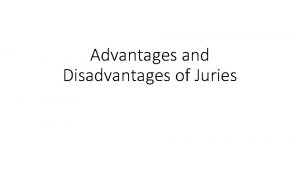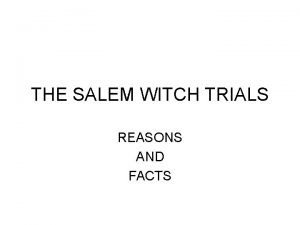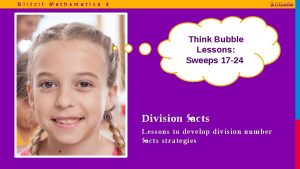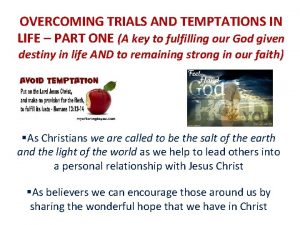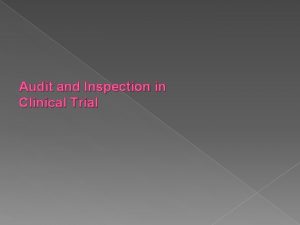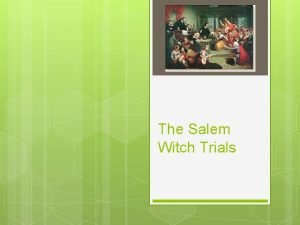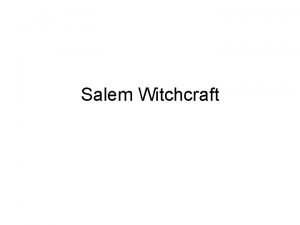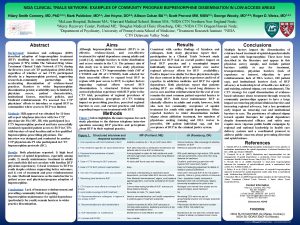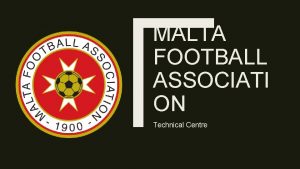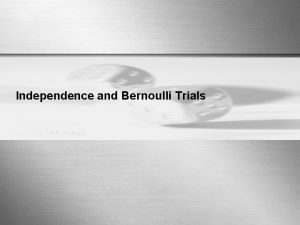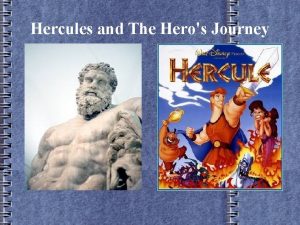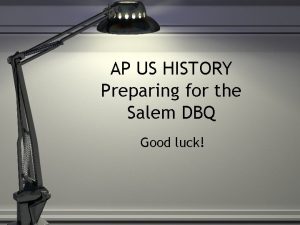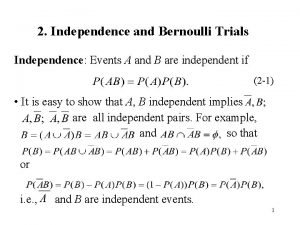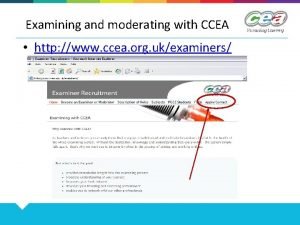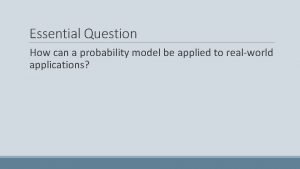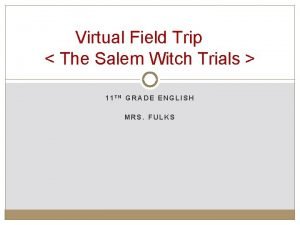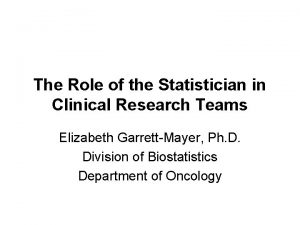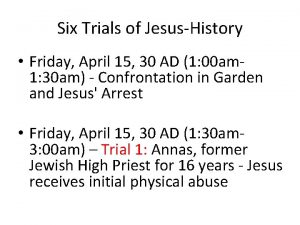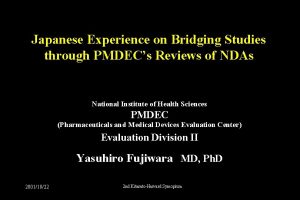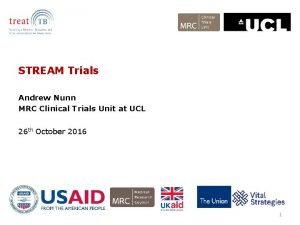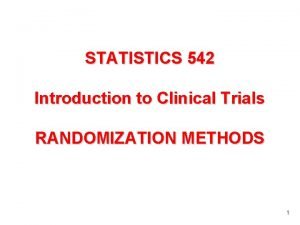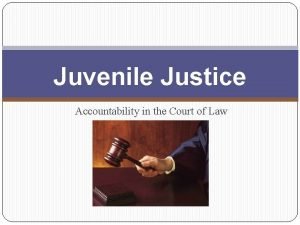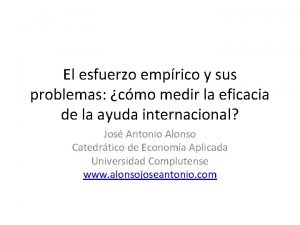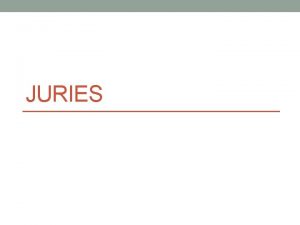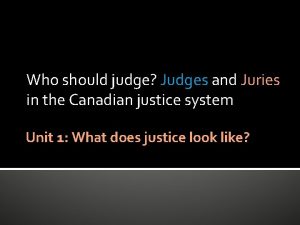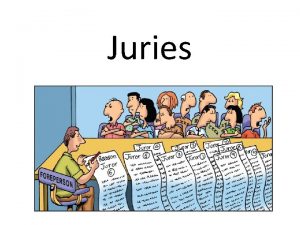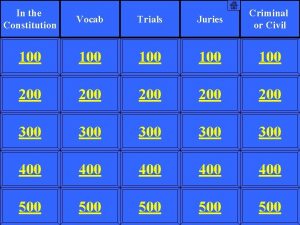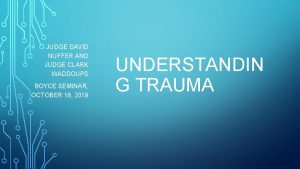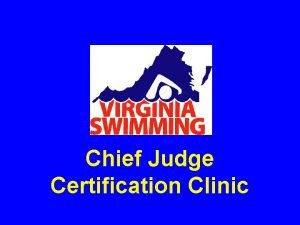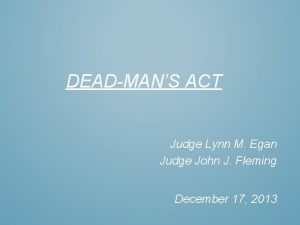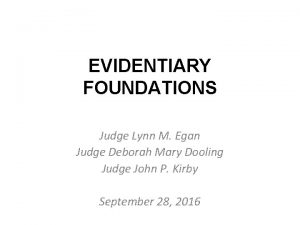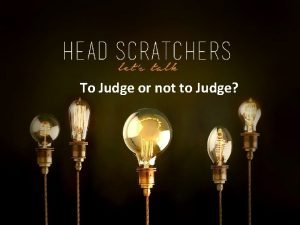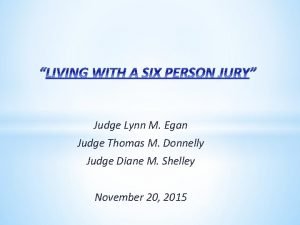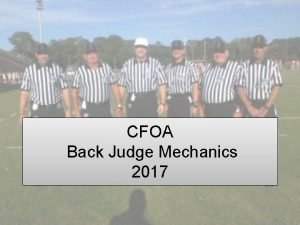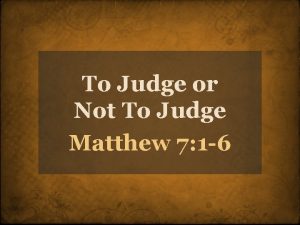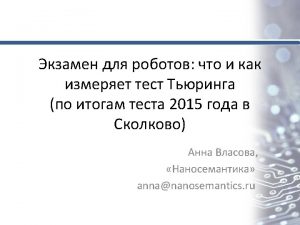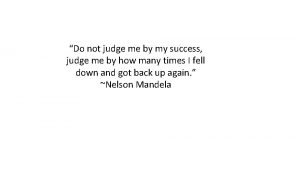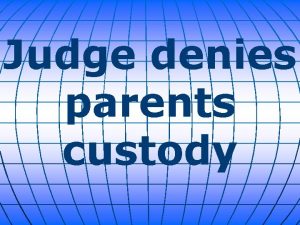Trials Juries History and Function judge the facts


































- Slides: 34

Trials & Juries

History and Function • judge the facts in a case • modeled after the British experience as described in the Magna Carta 1215 • American colonists believed very strongly in the right to trial by jury • primary purpose is to safeguard citizens against arbitrary governmental actions

History and Function • protected in three areas of the Constitution • Article III, Section 2 addresses “trial by jury” • Sixth Amendment addresses “speedy and public trial with impartial jury” • Seventh Amendment addresses the general importance of trial by jury

Scope of the Right • not all litigants are entitled to a jury trial • exempt are juvenile offenders, adults charged with petty offenses—crimes for which authorized punishment is less than six months in jail • some states offer wider guarantees • not all civil litigants are entitled to a jury trial

Jury Size • English juries became fixed at 12 in the fourteenth century • practice was adopted in the U. S. • Supreme Court has ruled that 12 is a historical accident • less than 12 is allowed in: a) noncapital criminal cases, and in b) civil cases

Jury Size • some argue that 6 member juries reduce court backlog • social science finds: • small and large juries spend equal time deciding cases • small juries do not exclude important points of views • jury size does not effect criminal cases • some evidence that 12 member juries are less able to reach verdict

Unanimity • colonies followed the English practice of requiring unanimity • Supreme Court has upheld nonunanimous verdicts criminal (noncapital) trials • only 2 states permit nonunanimous verdicts in criminal felony trials (LA, OR)

Jury Selection • juries are chosen through random processes and deliberate choice • three steps: a) compiling a master jury list, b) drawing the venire, and c) conducting the voir dire • do these steps produce fair and impartial juries?

Master Jury List • a master list of names is compiled for the community where the trial will be held (must be representative) • common sources include, voter registration, motor vehicle records, telephone directories, driver’s license lists, utility customer lists • historically some groups have been excluded: women, African-Americans

Venire • the venire is the jury pool • names are drawn from the master jury list and they are asked to report for jury duty (the venire) • some exemptions are made: doctors, lawyers, ministers, etc. • compliance with jury duty summonses is a major concern (many people do not report or ask for exemptions)

Voir Dire • voir dire is the examination of a prospective juror to determine if they can be fair and impartial • process varies tremendously—sometimes only a judge is involved in other place lawyers participate too • scope and intensity of the questioning varies too, can take a short time or long depending on the case

Voir Dire • each side in the case can excuse potential jurors • challenge for cause – is when the a juror is removed because the lawyers and judge agree the individual cannot be fair • peremptory challenges – when lawyers excuse jurors without giving a reason

Voir Dire • lawyers have wide discretion to use peremptory challenges – but may not exclude jurors because of race or gender • lawyers use voir dire for other reasons: • educating citizens about the role of juror • try to influence how the juror views their client

Jury Consultants • jury selection has taken a scientific turn • used in high profile/expensive cases • use public opinion polls, focus groups to help write questions for lawyers to use during voir dire • used more by defense attorneys than prosecutors

Jury Duty • jury duty is the only time when citizens perform direct service for their government • many citizens appear frustrated with having to perform jury service • most jurors report being satisfied with the process • government is trying to ease the burden -to get greater compliance

The Burden of Proof • the burden of proof varies depending on if the case is civil or criminal • in civil cases: preponderance of the evidence – evidence that is of greater weight than that presented by the opposition • in criminal cases: beyond a reasonable doubt – certainty that excludes all other reasonable explanations

Rules of Evidence • evidence refers to information presented at trial • real evidence includes objects (e. g. , guns) • testimony – statements by witnesses • expert witnesses – possess special knowledge or expertise • direct evidence refers to proof of a fact without other information • circumstantial evidence indirectly proves a point

Rules of Evidence • witnesses go through two stages • direct examination – questioning by the attorney that called the witness (must avoid leading questions – a question that presents an answer “You haven’t seen this gun, have you? ” • cross-examination – involves questioning by the opposing counsel purpose is to test the credibility of the witness

Rules of Evidence • two criteria for judging evidence • trustworthiness – only the most reliable and credible information should be used For example, courts avoid hearsay which is secondhand evidence – “my brother told me” because “my brother” is not in court to testify • relevance – evidence must be related to an issue at trial Effort is to avoid immaterial or irrelevant evidence

Scientific Evidence • common evidence today (blood, hairs, firearms, fingerprints) – have been controversial in the past because of the science behind their collection • courts are constantly faced with new technology to generate evidence • the judge has a responsibility to determine the validity of “scientific evidence” (Daubert v. Dow 1993)

Scientific Evidence • the most significant recent controversy involves DNA evidence • DNA evidence is now widely accepted and viewed as reliable • being used to open past convictions and has resulted in numerous exonerations • CSI effect – jurors now expect DNA in every case

Objections to Evidence • during trial attorneys are constantly objecting to the admission of evidence • the judge may rule on the spot or ask the attorneys to present arguments on why/why not the evidence should be admitted • inadmissible evidence does get presented – the judge will instruct the jury to ignore the evidence or call a mistrial

The Defense Presents its Case • Burden of Proof • asserts that the moving party did not provide sufficient evidence to convict • the defense is not required to call any witnesses or present evidence • can use cross-examination to raise doubts about the quality of the evidence • many experienced attorneys avoid this strategy unless they must use it because it does not give the jurors an “explanation”

The Defense Presents its Case • Denial • the other strategy is to deny the facts the moving party presented and offer evidence and testimony to back up this view • juror’s are naturally curious about the defendant’s case (reason, explanation, etc. ) • in criminal cases the defendant often needs to testify (but is not required to— 5 th Amendment)

Closing Arguments • after both sides have rested (presented their evidence) each party can make a closing argument – allow each side to sum up the facts and indicate why the jury should decide in their favor • put a favorable light on their case • require considerable skill by the lawyers (emotion is often used)

Jury Instructions • after closing arguments the judge instructs the jurors in the meaning of the law that is applicable to the facts • jury instructions include: a) discussions of general legal principles, b) specific instructions regarding the case at hand, c) information about legal standards, d) information about possible verdicts

What Motivates a Jury? • jury deliberations are secret so research on jury deliberations must be conducted indirectly • research is mixed on what jurors discuss during deliberations—most deliberations are short and focused on the trial • votes are taken almost immediately upon entering the deliberation room

What Motivates a Jury? • a lone juror rarely produces a hung jury • some argue that discussions “do not so much decide cases as bring about consensus” • if the jury cannot decide the trial ends with a hung jury • the moving party may decide to try the case again

The Verdict • the jury foreperson announces the verdict – the decision of a trial court • after the announcement either party can ask for the jurors to be polled • juries convict in criminal cases 2/3 of the time and in civil cases find for the plaintiffs about 50% • studies show that juries and judges would frequently agree on outcome

Prejudicial Pretrial Publicity • in criminal cases the defendant is entitled to a trial by impartial jury • the jury should not be influenced by pretrial publicity • pretrial publicity does bias juries • most trials go unnoticed so bias is extremely unlikely • voir dire is designed to find any jurors that might be biased

Limited Gag Orders • in notorious or high profile cases, when selecting a jury may be difficult the judge may issue a gag order – an order forbidding those involved in case from talking to the press • in theory gag orders can be enforced by contempt of court citations, but in practice they are very problematic because reporters refuse to reveal their sources

Change of Venue • venue is the local area where the trial is being heard • a change of venue can be requested to help pick an impartial jury • defense attorneys must weigh the benefits of a change of venue with the likelihood of getting a jury with different values, beliefs, etc. than the one from where the defendant is from

Sequestering the Jury • to mitigate the impact of the press on the jury the judge can decide to sequester the jury • the jurors may live in a hotel and be carefully monitored sometimes the judge will allow the jurors to go home but may instruct them not to watch tv, read newspapers, etc.

Alternate Jurors • Are present for entire trial but do not participate (and are not even present for) jury deliberations and decision-making • Purpose – take the place of a juror who is found unfit during a trial
 Advantages of juries
Advantages of juries Salem witch trials facts
Salem witch trials facts 64:8+9:9-63:7
64:8+9:9-63:7 Overcoming trials and temptations
Overcoming trials and temptations Phs human subjects and clinical trials information
Phs human subjects and clinical trials information Difference between inspection and audit
Difference between inspection and audit Design and analysis of cross over trials
Design and analysis of cross over trials Artist
Artist What is the smith hughes act
What is the smith hughes act Salem witch trials discovery education
Salem witch trials discovery education National geographic salem witch trials
National geographic salem witch trials Nida clinical trials network
Nida clinical trials network Malta football trials
Malta football trials Site initiation visit ppt
Site initiation visit ppt Bernoulli trials formula
Bernoulli trials formula Hercules hero's journey
Hercules hero's journey Future search trials austin
Future search trials austin Clinicaltrials.gov api
Clinicaltrials.gov api Drug development timeline
Drug development timeline Salem witch trials dbq
Salem witch trials dbq Repeated bernoulli trials
Repeated bernoulli trials Pediatric trials network
Pediatric trials network Field trials management solution
Field trials management solution Ccea agreement trials
Ccea agreement trials Do these situations involve bernoulli trials
Do these situations involve bernoulli trials Korean bridging studies
Korean bridging studies Witch
Witch Role of statistician in clinical trials
Role of statistician in clinical trials 6 trials of jesus
6 trials of jesus Sumaltriptan
Sumaltriptan Mrc clinical trials unit
Mrc clinical trials unit Clinical trials
Clinical trials Mpn clinical trials
Mpn clinical trials Many kids called unfit for adult trials
Many kids called unfit for adult trials Random control trials
Random control trials
